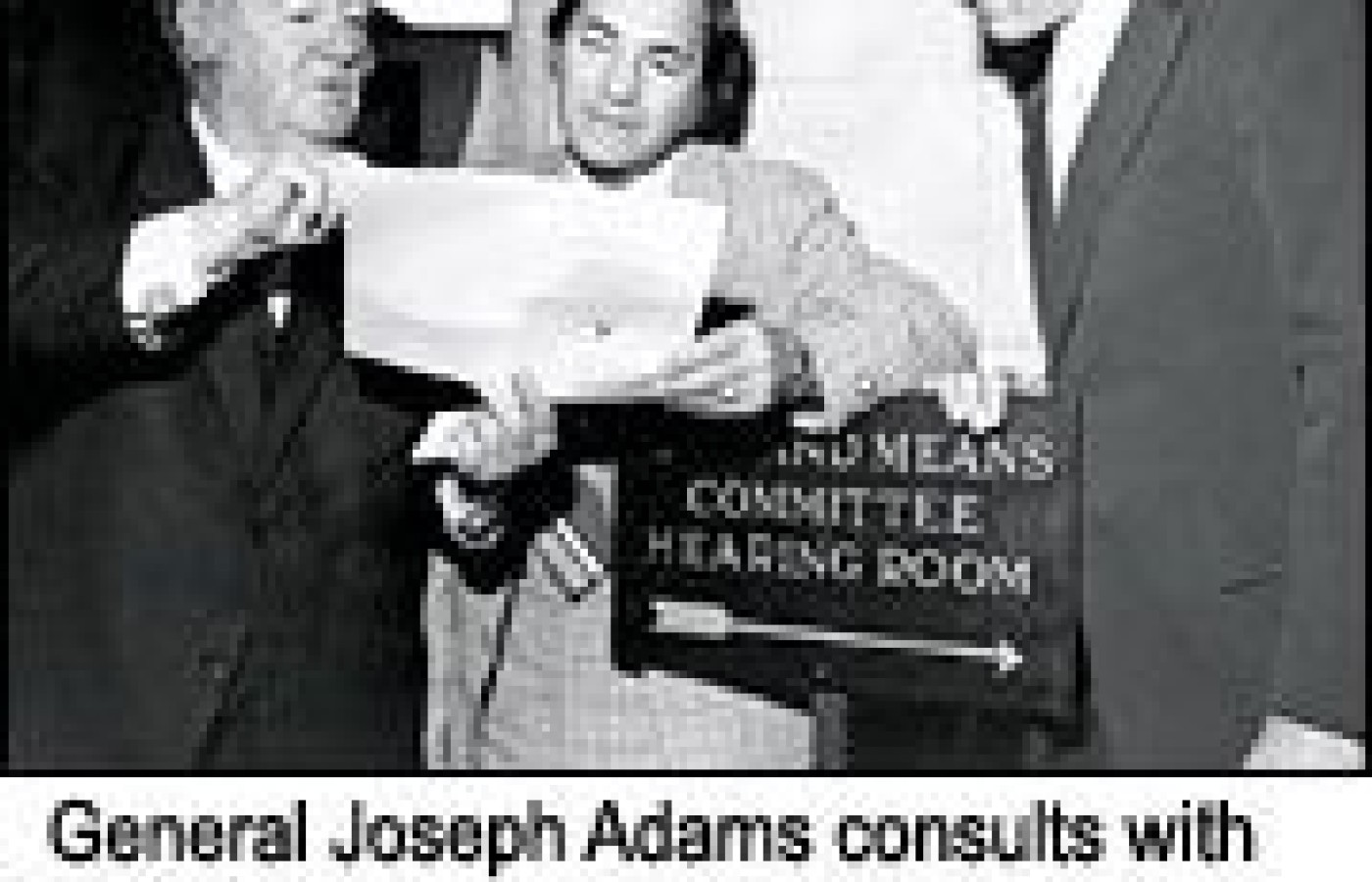Some doctors thrive in a personality-based clinic and have a loyal following no matter what services or equipment they offer, but for most chiropractic offices who are trying to grow and expand, new equipment purchases help us stay relevant and continue to service our client base in the best, most up-to-date manner possible. So, regarding equipment purchasing: should you lease, get a bank loan, or pay cash?
Wish List for Chirohistory
The recent passing of legendary figures in the history of the profession (Drs. Jerry McAndrews and "Nip" Quigley) gives reason to pause and reflect. For this writer, their deaths involved not only the loss of friends whose company I enjoyed, but also the passing of tremendous living sources of information and insight. Now, we can only celebrate their lives and fumble to fill in the voids they leave behind.
Jerome F. McAndrews, DC (1933-2006), a second-generation Palmer graduate (class of 1956), served at various times as private practitioner, executive director of the International Chiropractors' Association, president of Palmer College - Davenport, president of the Association of Chiropractic Colleges, vice president of the Council on Chiropractic Education, vice president of the National College of Chiropractic, vice president of the American Chiropractic Association, and as a member of the board of directors of the National Chiropractic Mutual Insurance Company.1,2 He was close friends with Dr. David ("Dave") Palmer and worked within the Palmer system for many years. It was Jerry who encouraged his brother George, a young patent attorney, to take on the American Medical Association and sundry other national professional societies on behalf of the chiropractic profession. Dr. McAndrews was not a principal in the 14-year-long Wilk case; however, he was a stimulus, close observer and strenuous supporter of this legal struggle.
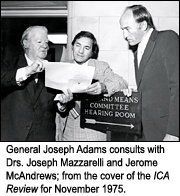
|
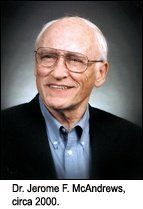
|
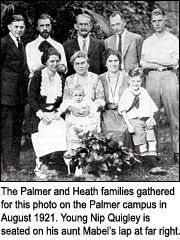
|
William Heath Quigley, DC, MS (1915-2006), nephew of Mabel Heath Palmer, DC, grew up within the Palmer family3 and viewed the profession from a unique vantage point. A graduate of the University of Pittsburgh in 1936, he earned his DC from the Palmer School of Chiropractic (PSC) in 1938 and promptly joined the faculty.4 "Nip," as he was known by friends, developed a scholarly and practical interest in mental health and illness,5 and served for many years as director of the Clearview Sanitarium,6 a mental hospital in Davenport that was owned by the PSC. He was very involved in the affairs of the ACA Council on Mental Health and served as its president.
When his cousin Dave Palmer suffered a stroke, Nip stepped in as interim administrator of Palmer College. He later served as president of the Los Angeles College of Chiropractic7 and as administrator at the Cleveland Chiropractic College of Los Angeles. Along the way, he earned a master's degree in nutrition from the University of Bridgeport and the esteem of a significant number of chiropractors. The Association for the History of Chiropractic named him its Lee-Homewood Award recipient in 1991, in recognition of his lifetime contributions to the profession.8 At the profession's centennial celebration in Davenport, he delivered an outstanding invited address on the life and times of his uncle by marriage, B.J. Palmer, DC. The book he authored in his later years, an historical treatise about the Palmer family, currently is still in need of a publisher.
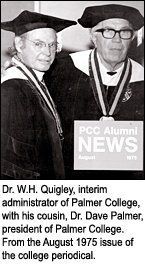
|

|
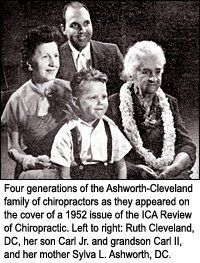
|
There are so many important events these men witnessed or participated in, so many significant figures in the history of chiropractic with whom they were well-acquainted, and so many worthy papers their memories might have contributed to. It is sobering to recognize how fleeting our time in this world is, and how perishable the store of knowledge and understanding we carry with us. I'm reminded of my interviews of Carl S. Cleveland, Jr., DC, who granted multiple interviews to relate the stories of his grandmother, 1910 Palmer College graduate Sylva L. Ashworth, DC.9
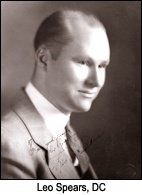
Unfortunately, I expected that Carl Jr., like so many in his family, would live into his 80s or 90s. Alas, before we could get around to discussing his mother or his own career, he had crossed the river.10
At moments like these, we are reminded of our own mortality. The loss of Drs. McAndrews and Quigley prompted me to list those topics about which I'd like to read (or write) in my remaining years. Among them:
- the hundred years war between chiropractors and political medicine;
- the England case in Louisiana, 1957-1966;
- contain and eliminate: Wilk, et al., v AMA et al., 1963-1989;
- from UCA to ACA: a history of organized chiropractic in America, 1906-2006;
- the saga of the American Bureau of Chiropractic;
- basic science laws and the saga of the National Board of Chiropractic Examiners;
- a history of marketing in chiropractic (including the works of B.J. Palmer, Harry E. Vedder, Roy S. Marlow, Sr., the American Society of Chiropractic, B.F. Gurden, James R. Drain, Leo Spears, the Johnson twins, Thurman Fleet, the Burton Shields Company, James E. Slocum, Jimmy Parker, Sid E. Williams, Peter Fernandez, Gordon Heuser, Rolla Pennell, and Maxwell Petersen);
- CCE vs. "superstraight" chiropractic (SCASA & FSCO);
- a history of the Cleveland Colleges;
- a history of Northwestern College of Chiropractic, 1941-present;
- a history of the Palmer Colleges;
- a history of New York Chiropractic College: from Frank Dean to Kenneth Padgett;
- a history of Western States Chiropractic College: the first century;
- the emergence of a genuine science of chiropractic: 1978-2003;
- heretics and reformers in chiropractic (including William C. Schulze, Frank R. Margetts, C.O. Watkins, W.A., Budden, John J. Nugent, A.E. Homewood, Samuel Homola, Scott Haldeman, Joseph Janse, Roy W., Hildebrandt, and Herbert J. Vear);
- strategies for clinical research: an inaudible 60-year dialogue among chiropractors;
- the Chiropractic Research Foundation: 1944-Present; and
- the evolution of clinical technique systems among chiropractors.
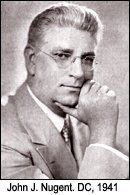
Given the passion of inter- and intraprofessional feuding in the chiropractic saga, and the importance that DCs attribute to their history and philosophies, the desirability of histories for the more than 100 state membership societies that have operated within the United States is readily apparent.
Few states can yet point to credible and thorough books11-15 about their past activities. Few of the organizations that constitute the infrastructure of the profession have yet been the subject of critical, scholarly analysis.1,16,17 Among those national organizations whose tales have yet to be told in depth are the American Chiropractic Association, the International Chiropractors' Association, the Foundation for Chiropractic Education and Research, the National Chiropractic Association, the National Board of Chiropractic Examiners, and the Universal Chiropractors Association.
No doubt the reader will conjure up many additionally worthy investigations that could aid us in understanding where chiropractors have come from, what the profession has lived through, and perhaps where it ought to be headed. Although it may seem obvious that time's a' wasting, it's a simple truth that bears repeating. We must do it now or lose it later.
References
- Keating, Joseph C.; Sportelli, Louis; Siordia, Lawrence. We Take Care of Our Own: NCMIC and the Story of Malpractice Insurance in Chiropractic. Clive IA: NCMIC Group, Inc., 2004.
- Palmer Communications. "In Memoriam: Jerome F. McAndrews, D.C., 14 June 2006" (memorandum to Palmer employees).
- "Fished From the Fountain." The Chiropractor 1915 (Aug);11(8):36.
- "In Memoriam." Chiropractic Journal of Australia 2006 (June);36(2):80.
- Quigley, W. Heath. Hospitalization for the mentally ill. ICA International Review of Chiropractic. 1956 (Jan);10(7):5-8.
- "Clear View Sanitarium Will Be Home for the Retired." Digest of Chiropractic Economics 1961 (Nov/Dec);4(3):10-2.
- Keating, Joseph C.; Phillips, Reed B. (Eds.). A History of Los Angeles College of Chiropractic. Whittier CA: Southern California University of Health Sciences, 2001.
- Gibbons, Russell W. "W. Heath Quigley: He Grew Up Chiropractic, Married Into its Pioneer Family and Chronicled The Fountainhead." Chiropractic History 1991 (Dec);11(2):40-1.
- Keating JC, Cleveland CS. "Sylva L. Ashworth, D.C., the 'Grand Old Lady of Chiropractic.'" Chiropractic History 1992 (Dec);12(2):14-23.
- "In Memoriam: Carl S. Cleveland, Jr., D.C." ACA Journal of Chiropractic 1995 (Aug);32(8):17.
- Mawhiney, Robert B. Chiropractic in Wisconsin, 1900-1950. Madison WI: Wisconsin Chiropractic Association, 1984.
- Mawhiney, Robert B. Chiropractic in Wisconsin, 1950-1990. Roberts Publishing Company, 1993.
- McGinnis, Edward J.; Jordan, Janet (Eds.): A History of Chiropractic in South Carolina. Columbia SC: South Carolina Chiropractic Association, 1997.
- Metz, Martha. Fifty Years of Chiropractic Recognized in Kansas. Abilene KS: the author, 1965.
- Rhodes, Walter R. The Official History of Chiropractic in Texas. Austin TX: Texas Chiropractic Association, 1978.
- Keating, Joseph C.; Callender, Alana K.; Cleveland, Carl S. A History of Chiropractic Education in North America: Report to the Council on Chiropractic Education. Davenport IA: Association for the History of Chiropractic, 1998.
- Keating, Joseph C.; Liewer, Donna. FCLB and the Story of Licensing in Chiropractic; in preparation.
